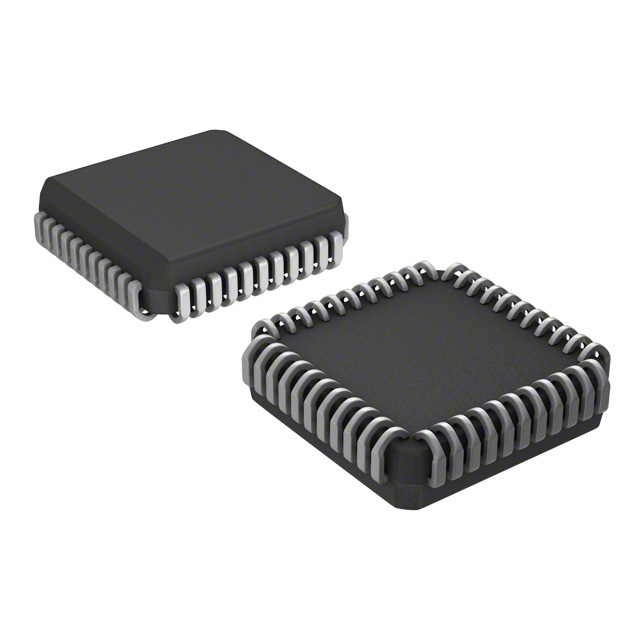Xem thông số kỹ thuật để biết chi tiết sản phẩm.

PIC16C74A-20/L
Product Overview
Category
The PIC16C74A-20/L belongs to the category of microcontrollers.
Use
This microcontroller is commonly used in various electronic applications that require embedded control and processing capabilities.
Characteristics
- The PIC16C74A-20/L operates at a clock frequency of 20 MHz.
- It has a 8-bit architecture, making it suitable for handling simple to moderately complex tasks.
- This microcontroller offers a wide range of peripherals and features, including timers, analog-to-digital converters, and serial communication interfaces.
- It supports both low-power and high-performance modes, providing flexibility in power consumption.
Package
The PIC16C74A-20/L is available in a 40-pin PDIP (Plastic Dual In-line Package) package.
Essence
The essence of the PIC16C74A-20/L lies in its ability to provide a cost-effective solution for embedded control applications. It combines a powerful CPU core with a rich set of peripherals, making it suitable for a wide range of projects.
Packaging/Quantity
The PIC16C74A-20/L is typically sold in reels or tubes, with a quantity of 1000 units per reel/tube.
Specifications
- Operating Voltage: 2.5V to 5.5V
- Flash Memory: 4KB
- RAM: 192 bytes
- I/O Pins: 33
- Timers: 3
- Analog-to-Digital Converter (ADC): 8 channels, 10-bit resolution
- Serial Communication Interfaces: USART, SPI, I2C
Detailed Pin Configuration
The PIC16C74A-20/L has a total of 40 pins, each serving a specific purpose. Here is a detailed pin configuration:
- VDD - Power supply voltage
- RA0 - General-purpose I/O pin
- RA1 - General-purpose I/O pin
- RA2 - General-purpose I/O pin
- RA3 - General-purpose I/O pin
- RA4/TOCKI - General-purpose I/O pin / Timer Clock input
- MCLR/VPP - Master Clear input / Programming voltage
- VSS - Ground
- RB0/INT - General-purpose I/O pin / External Interrupt input
- RB1 - General-purpose I/O pin
- RB2 - General-purpose I/O pin
- RB3 - General-purpose I/O pin
- RB4 - General-purpose I/O pin
- RB5 - General-purpose I/O pin
- RB6/PGC - General-purpose I/O pin / Programming Clock
- RB7/PGD - General-purpose I/O pin / Programming Data 17-32. RC0 to RC7 - General-purpose I/O pins
- OSC1/CLKIN - Oscillator input
- OSC2/CLKOUT - Oscillator output 35-40. VSS - Ground
Functional Features
The PIC16C74A-20/L offers several functional features that enhance its usability and performance:
- Powerful CPU Core: The microcontroller is equipped with an efficient 8-bit CPU core, capable of executing instructions at high speed.
- Rich Peripheral Set: It includes timers, an analog-to-digital converter, and various serial communication interfaces, enabling seamless integration with external devices.
- Flexible Power Modes: The microcontroller supports both low-power and high-performance modes, allowing developers to optimize power consumption based on the application requirements.
- Ample Memory: With 4KB of flash memory and 192 bytes of RAM, the PIC16C74A-20/L provides sufficient storage for program code and data.
- Wide Operating Voltage Range: The microcontroller can operate within a voltage range of 2.5V to 5.5V, making it compatible with various power supply sources.
Advantages and Disadvantages
Advantages
- Cost-effective solution for embedded control applications
- Rich set of peripherals for enhanced functionality
- Flexible power modes for optimized power consumption
- Ample memory for program code and data storage
- Wide operating voltage range for compatibility
Disadvantages
- Limited processing capabilities compared to higher-end microcontrollers
- Relatively small amount of memory for complex applications
- Lack of advanced features found in more specialized microcontrollers
Working Principles
The PIC16C74A-20/L operates based on the principles of digital logic and microcontroller architecture. It executes instructions stored in its flash memory, manipulating data and interacting with peripherals as directed by the program code. The microcontroller's CPU core fetches instructions from memory, decodes them, and performs the necessary operations. Input/output operations are facilitated through
Liệt kê 10 câu hỏi và câu trả lời thường gặp liên quan đến ứng dụng PIC16C74A-20/L trong giải pháp kỹ thuật
What is the operating frequency of PIC16C74A-20/L?
- The operating frequency of PIC16C74A-20/L is 20 MHz.What are the key features of PIC16C74A-20/L?
- PIC16C74A-20/L features 33 I/O pins, 5-channel 8-bit A/D converter, and 256 bytes of EEPROM data memory.How can PIC16C74A-20/L be programmed?
- PIC16C74A-20/L can be programmed using a suitable PIC programmer and programming software.What are the typical applications of PIC16C74A-20/L?
- Typical applications of PIC16C74A-20/L include industrial control systems, consumer electronics, and automotive applications.What voltage levels does PIC16C74A-20/L support?
- PIC16C74A-20/L supports operation at voltage levels ranging from 2.0V to 5.5V.Is PIC16C74A-20/L suitable for battery-powered devices?
- Yes, PIC16C74A-20/L's low power consumption makes it suitable for battery-powered devices.Can PIC16C74A-20/L communicate with other devices?
- Yes, PIC16C74A-20/L supports various communication protocols such as SPI, I2C, and UART.What development tools are available for PIC16C74A-20/L?
- Development tools for PIC16C74A-20/L include MPLAB X IDE, MPLAB ICD 4 in-circuit debugger, and various compilers.Are there any specific design considerations for using PIC16C74A-20/L?
- Design considerations for PIC16C74A-20/L include proper decoupling, PCB layout, and clock circuitry.Where can I find detailed technical documentation for PIC16C74A-20/L?
- Detailed technical documentation for PIC16C74A-20/L can be found on Microchip's official website or in the datasheet provided by the manufacturer.

